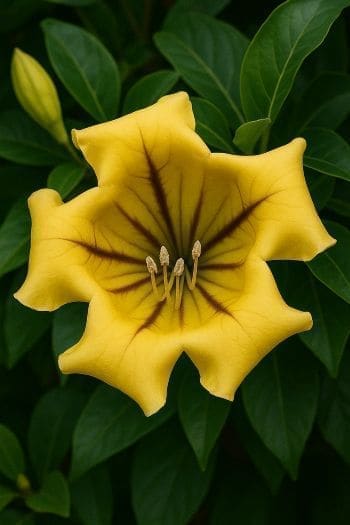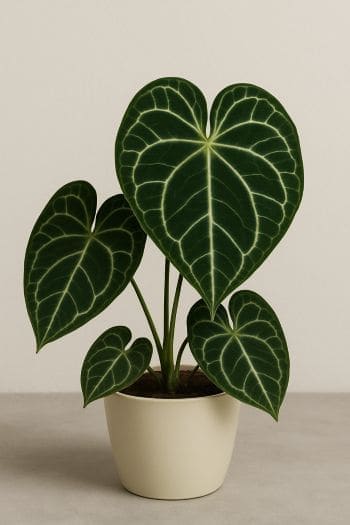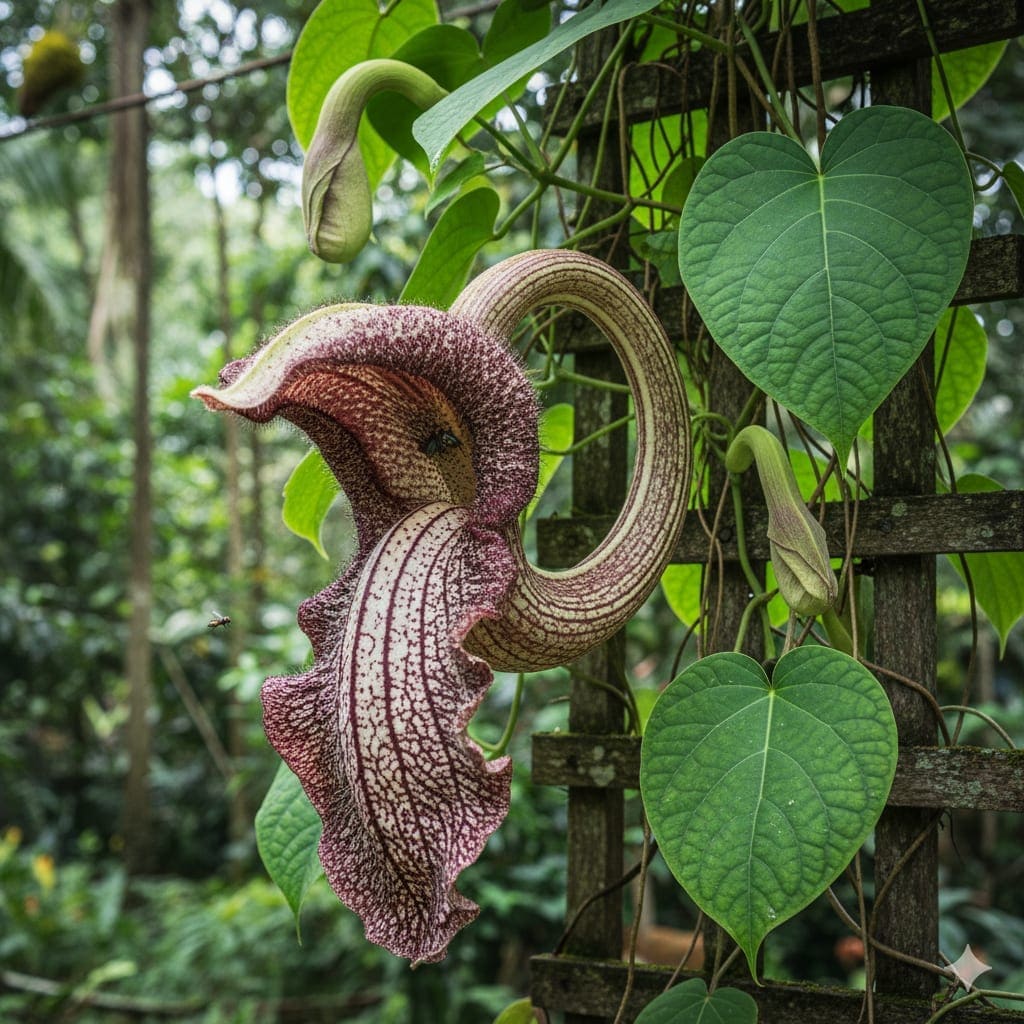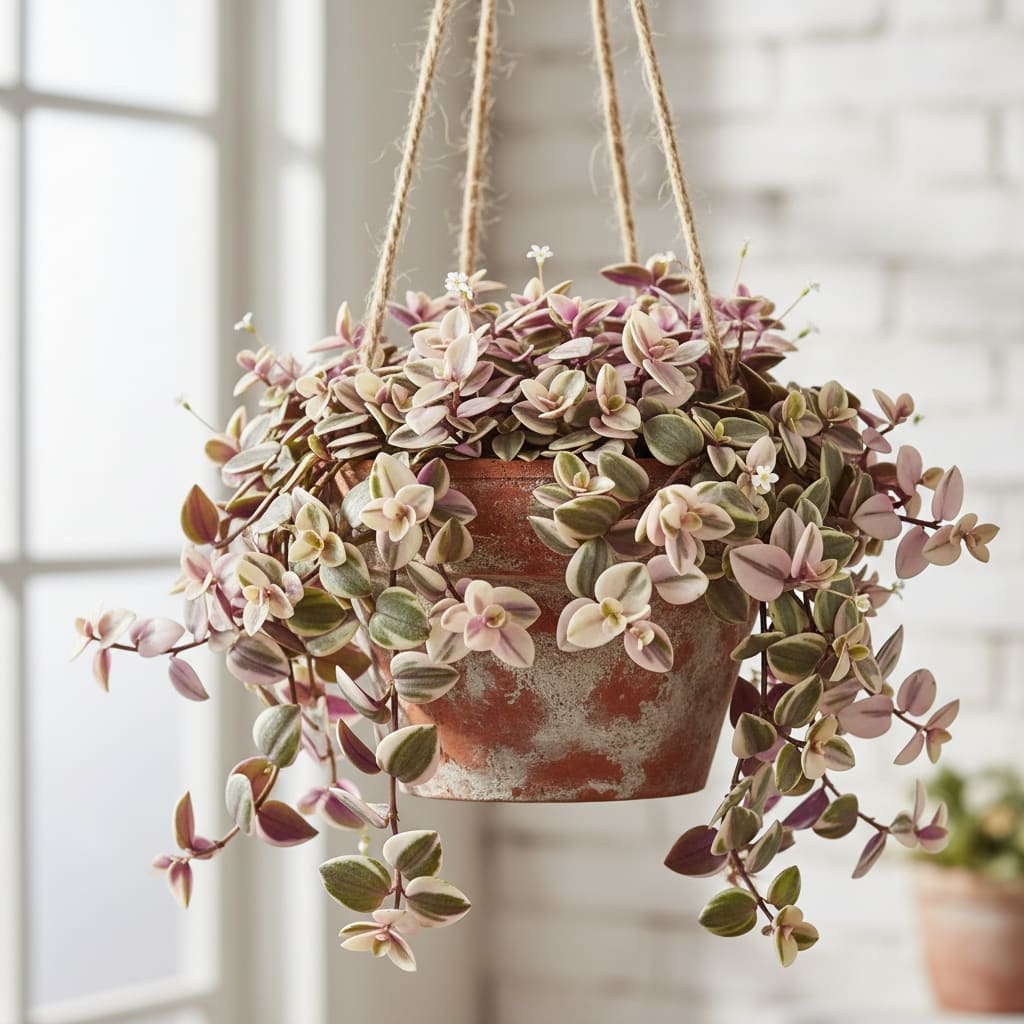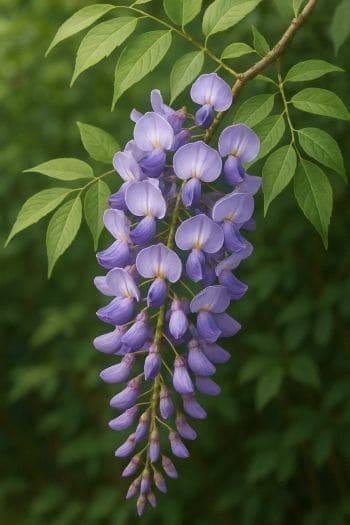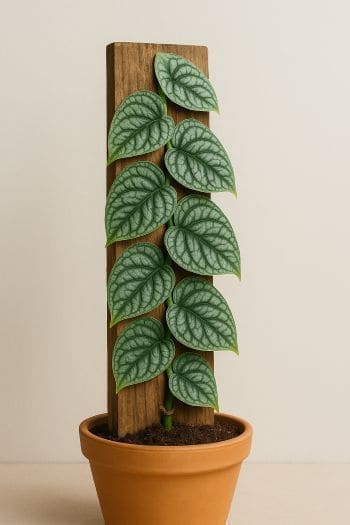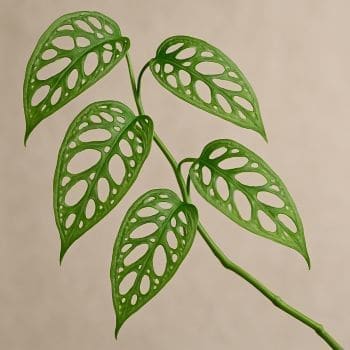Dichorisandra mosaica (Mosaic Plant) Care & Growing Guide
Overview
Dichorisandra mosaica, commonly known as the Mosaic Plant, is a striking tropical species native to Central and South America. It is prized for its intricate, patterned foliage that resembles stained glass, making it a standout in any indoor plant collection. This plant thrives in warm, humid environments and is best suited for bright, indirect light conditions. Its trailing or climbing growth habit makes it versatile for both hanging displays and vertical supports.
Identification & Growth Habit
The Mosaic Plant is recognized by its elongated, lance-shaped leaves adorned with a distinctive mosaic-like pattern of light and dark green. The veins form a network that gives the foliage a textured, artistic look. Mature plants can develop trailing stems or climb when given support such as a trellis or moss pole. In optimal conditions, it can reach lengths of 2–3 feet (60–90 cm) or more, with a bushy, cascading appearance.
Light & Placement
Place Dichorisandra mosaica in a location with bright, indirect light to preserve the vibrancy of its leaf patterns. While it can tolerate lower light levels, the mosaic markings may fade. Avoid direct midday sun, which can scorch the leaves. East- or north-facing windows are ideal, or position it a few feet back from a bright south- or west-facing window with sheer curtains for light diffusion.
Watering & Humidity
Water when the top inch (2–3 cm) of soil feels dry to the touch. Use room-temperature water and ensure excess drains freely from the pot. Overwatering can lead to root rot, so never allow the plant to sit in standing water. During winter, reduce the frequency as growth slows.
This species prefers high humidity of 60% or more. In dry indoor environments, increase humidity with a humidifier, pebble tray, or by grouping plants together. Regular misting can also help, but avoid saturating the leaves to prevent fungal issues.
Soil & Repotting
Use a well-draining, organic-rich potting mix. A blend of standard potting soil, peat moss, and perlite in equal parts works well. This combination retains moisture without becoming waterlogged. Repot every 1–2 years in spring, or when roots begin to circle the pot, refreshing the soil to maintain nutrient availability.
Fertilizing
Feed with a balanced, water-soluble fertilizer diluted to half strength every 4–6 weeks during the active growing season (spring and summer). Avoid fertilizing in fall and winter when growth slows. Over-fertilizing can cause salt buildup and root damage, so flush the soil with plain water every few months to prevent accumulation.
Pruning & Training
Prune to maintain shape and encourage bushier growth by trimming back leggy stems just above a node. Remove any yellowing or damaged leaves promptly. For a climbing display, train stems onto a trellis, moss pole, or other vertical support. For a trailing look, allow stems to cascade from a hanging basket or shelf.
Propagation
Step-by-Step Stem Cutting Method
- Select a healthy stem with at least one visible node and several leaves.
- Using sterilized scissors or pruners, cut just below a node.
- Remove the lower leaves, leaving at least one or two at the top.
- Place the cutting in a jar of clean water or directly into moist, well-draining potting mix.
- If rooting in water, change the water every few days to prevent stagnation.
- Maintain high humidity around the cutting by covering it loosely with a clear plastic bag or placing it in a propagation box.
- Roots should develop within a few weeks; transplant water-rooted cuttings into soil once roots are 2–3 inches (5–7 cm) long.
Common Problems
Pests
- Spider mites: Look for fine webbing and stippled leaves. Increase humidity and treat with insecticidal soap or neem oil.
- Mealybugs: White, cottony masses on stems or leaf joints. Remove manually with a cotton swab dipped in alcohol, and follow up with a systemic or contact insecticide if needed.
- Scale insects: Brown or tan bumps on stems. Scrape off gently and treat with horticultural oil.
Diseases
- Root rot: Caused by overwatering or poorly draining soil. Remove affected roots, repot in fresh mix, and adjust watering practices.
- Leaf spot: Brown or black spots with yellow halos. Improve air circulation and avoid wetting foliage; remove affected leaves.
Toxicity & Pet Safety
Dichorisandra mosaica is considered toxic if ingested by pets or humans. Keep it out of reach of cats, dogs, and small children. Symptoms may include gastrointestinal upset; contact a veterinarian if ingestion is suspected.
Styling & Decor Tips
The Mosaic Plant’s patterned leaves make it a natural focal point. Use it as a statement plant in a decorative pot on a plant stand, or let it trail from a hanging planter. For a lush, vertical accent, train it up a moss pole alongside other tropical vines. Its rich green tones pair well with neutral or warm-toned interiors.
Varieties & Cultivars
While Dichorisandra mosaica is not widely available in numerous named cultivars, variations in leaf pattern intensity and size may occur due to growing conditions. Collectors sometimes seek out specimens with particularly vivid or high-contrast veining.
Buying Tips & Maturity
When purchasing, look for plants with vibrant, undamaged leaves and no signs of pests. Check the undersides of leaves and along stems. Younger plants may have less pronounced leaf patterns, which often intensify as the plant matures under optimal light. Healthy specimens should have firm stems and no wilting.
Seasonal Care
- Spring/Summer: Active growth period; maintain regular watering, feeding, and high humidity. Repot if needed.
- Fall: Gradually reduce feeding and monitor for lower light levels indoors.
- Winter: Water less frequently, avoid cold drafts, and supplement light if days are short.
FAQ
- How fast does Dichorisandra mosaica grow? Growth is moderate under ideal conditions, with noticeable new leaves during the warmer months.
- Can it grow outdoors? In tropical or frost-free climates, it can be grown outdoors in shaded areas. In temperate zones, it should be kept as a houseplant or moved indoors during cold weather.
- Why are my plant’s leaves losing their pattern? This can occur in low light; move the plant to a brighter, indirect light location.
- Should I mist the leaves? Light misting can help with humidity, but avoid soaking the foliage to prevent fungal issues.
- When should I repot? Repot in spring when roots are circling the pot or the plant becomes top-heavy.
